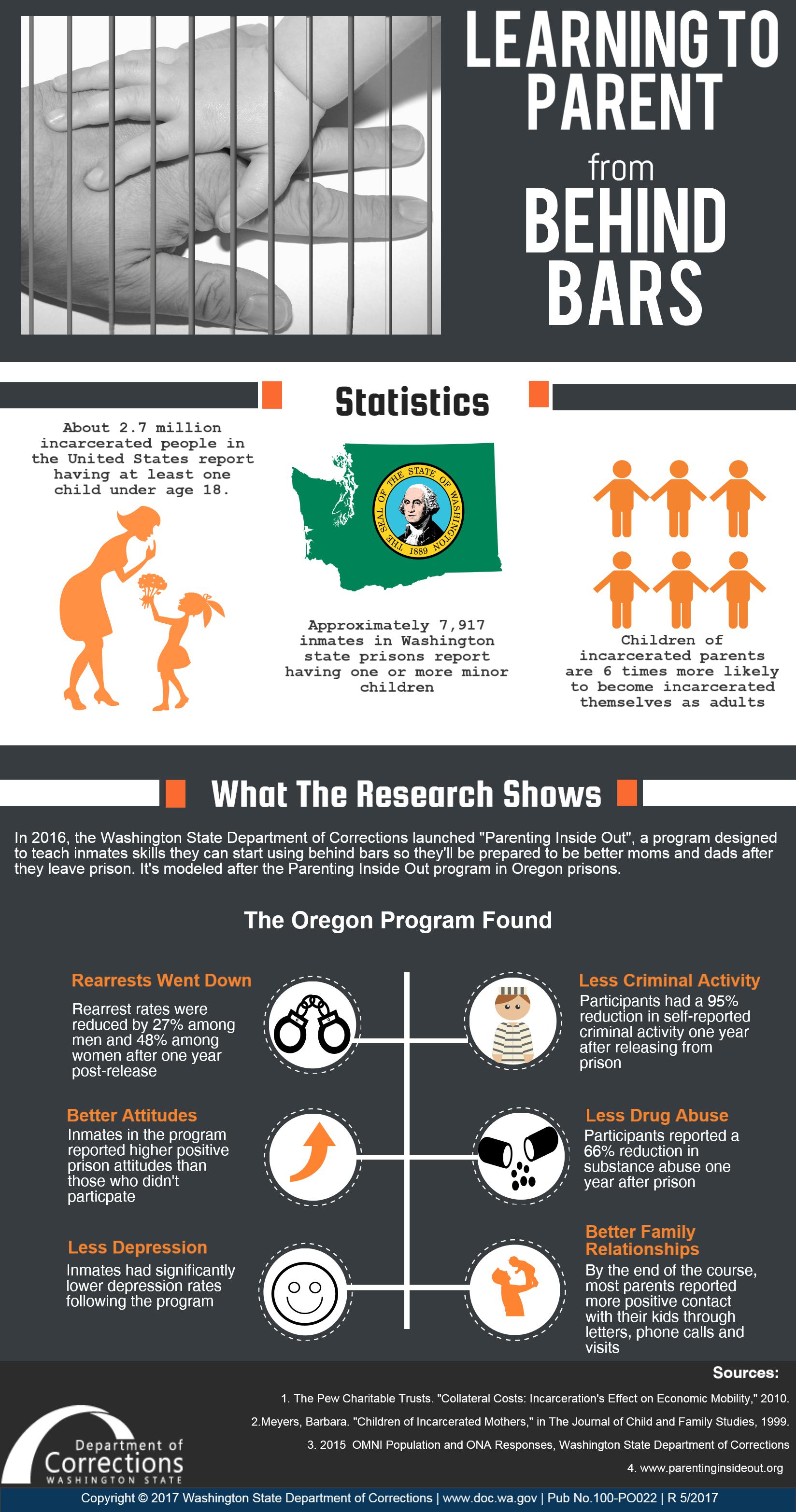INFOGRAPHIC: Learning to Parent from Behind Bars
100-PO022 (R 5/2017)

(Rachel Friederich , DOC Communications)
Text Version
Statistics
- About 2.7 million incarcerated people in the United States report having at least one child under age 18.
- Approximately 7,917 inmates in Washington state prisons report having one or more minor children.
- Children of incarcerated parents are six times more likely to become incarcerated themselves as adults.
What the Research Shows
In 2016, The Washington State Department of Corrections launched "Parenting Inside Out," a program designed to teach inmates skills they can start using behind bars so they'll be better moms and dads after they leave prison. It's modeled after the Parenting Inside Out Program in Oregon prisons.
The Oregon Program Found
- Rearrests went down. Re-arrest rates were reduced by 27 percent among men and 48 percent among women one year post-release.
- Less Criminal Activity. Participants had a 95 percent reduction in self-reported criminal activity one year after releasing from prison.
- Better Attitudes. Inmates in the program reported higher positive prison attitudes than those who didn't participate.
- Less Drug Abuse. Participants reported a 66 percent reduction in substance abuse one year after prison.
- Less Depression. Inmates had significantly lower depression rates following the program.
- Better Family Relationships. By the end of the course, most participants reported more positive contact with their kids through letters, phone calls and visits.
Sources
- The Pew Charitable Trusts "Collateral Costs: Incarceration's Effect on Economic Mobility." 2010.
- Meyers, Barbara. "Children of Incarcerated Mothers," in The Journal of Child and Family Studies, 1999.
- 2015 OMNI Population and ONA Responses, Washington State Department of Corrections Data and Analytics Unit
- www.parentinginsideout.org/
